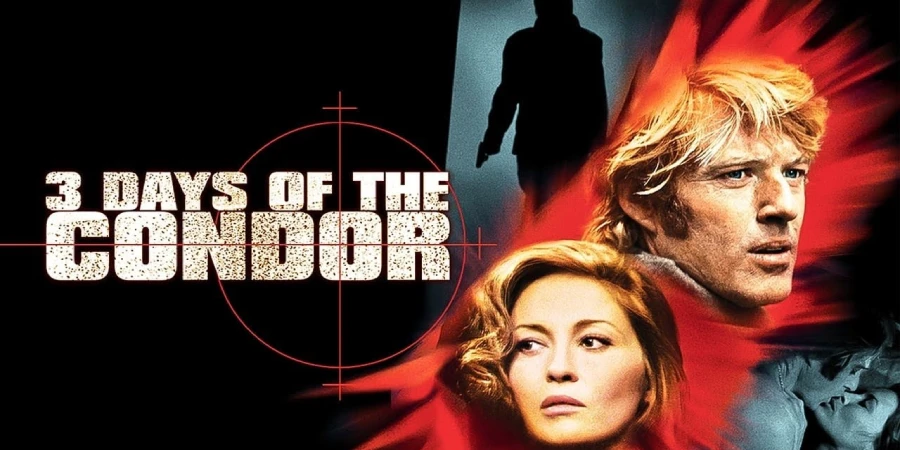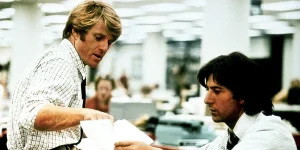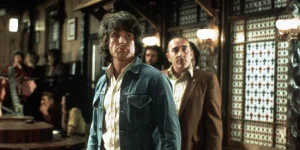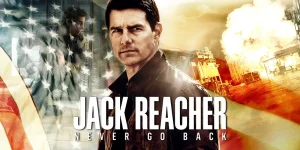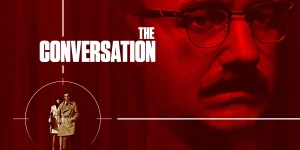Sydney Pollack’s Three Days of the Condor is one of the quintessential political thrillers of the 1970s. It blends Cold War paranoia, corporate espionage, and a chase narrative into a film that is as relevant today as it was in the era of Watergate and the CIA scandals. Here’s everything you need to know about this tense, intelligent thriller.
Table of Contents
ToggleDetailed Summary
Introduction: The CIA Literary Section
The story begins with Joe Turner (Robert Redford), a CIA analyst whose job isn’t glamorous fieldwork but reading books, newspapers, and magazines to detect hidden codes or patterns that might pose a national security risk. Turner, code-named “Condor,” works at a small research facility in New York. His ordinary day quickly becomes extraordinary when he returns from lunch to find all of his co-workers murdered.
The Hit and Turner on the Run
Realizing he was the target of a hit, Turner contacts the CIA for help, only to discover the organization itself may be complicit. The killers, led by the mysterious Joubert (Max von Sydow), seem to know his every move. Turner quickly learns that his survival depends on trusting no one, including his own agency.
Kidnapping Kathy Hale
In a desperate move, Turner kidnaps Kathy Hale (Faye Dunaway), a photographer, and forces her to let him hide in her apartment. What begins as a hostage situation turns into a reluctant partnership. Their relationship becomes romantic, but Kathy herself is torn between fear and fascination with the man who has dragged her into a deadly conspiracy.
The Layers of the Conspiracy
Turner uncovers the truth: his office stumbled upon a rogue CIA operation planning a covert war in the Middle East to secure oil interests. The “literary section” accidentally read too much and paid the price. Turner’s real challenge is not only to stay alive but to figure out how to expose the conspiracy when every institution around him seems compromised.
Movie Ending
The film’s climax comes when Turner confronts Higgins (Cliff Robertson), his CIA handler, about the conspiracy. Turner threatens to expose the CIA’s plan to the press. Higgins argues that Americans would support the covert operations if they knew it was about oil and national survival, revealing the cynical realpolitik of the era.
The final scene is chillingly ambiguous. Turner has already leaked information to The New York Times. But Higgins warns him: what if the Times doesn’t publish the story? What if the press, or the government, suppresses it? The movie ends with Turner standing outside The New York Times building, doubt clouding his face, as Higgins’s words linger. The audience is left to wonder whether truth really has power in a world run by hidden interests.
Are There Post-Credits Scenes?
No. Like most films of the 1970s, Three Days of the Condor does not have a post-credits scene. The film’s power lies in its haunting ending, which deliberately leaves viewers unsettled.
Type of Movie
This is a political thriller and espionage drama, rooted in Cold War paranoia. It blends action, suspense, and intellectual intrigue, focusing less on car chases and more on the fear of institutional corruption.
Cast
- Robert Redford as Joseph Turner / Condor
- Faye Dunaway as Kathy Hale
- Cliff Robertson as Higgins
- Max von Sydow as Joubert
- John Houseman as Mr. Wabash
- Addison Powell as Dr. Ferdinand Lappe
Film Music and Composer
The score was composed by Dave Grusin, whose jazzy, tension-filled music amplifies the film’s suspense. Grusin’s soundtrack became iconic for its subtle paranoia-infused style and is considered one of the high points of 1970s film scoring.
Filming Locations
The movie was shot in New York City, with key locations including:
- The Upper West Side – where Turner’s apartment and much of the street-level action takes place.
- The World Trade Center – used for several CIA-related office exteriors.
- The Ansonia building – served as a major setting for interiors.
New York is not just a backdrop—it embodies the idea of being lost in a crowd, vulnerable even in a bustling metropolis.
Awards and Nominations
- Nominated for the Academy Award for Best Film Editing (1976).
- Nominated for the Academy Award for Best Original Score (Dave Grusin).
- The film is often considered a touchstone for political thrillers, even if it didn’t sweep awards season.
Behind the Scenes Insights
- Sydney Pollack and Robert Redford clashed at times, with Redford wanting a more overtly political tone, while Pollack aimed for a mainstream thriller.
- The film was inspired by real-life revelations about CIA misconduct in the 1970s, including assassination plots and coups.
- Max von Sydow improvised much of Joubert’s chilling calmness, making the character scarier by his restraint rather than violence.
Inspirations and References
The movie is based on the novel “Six Days of the Condor” (1974) by James Grady. The film compresses the timeline to three days for pacing. Thematically, it draws from real-life scandals like the Watergate break-in and exposes of CIA abuses.
Alternate Endings and Deleted Scenes
While there are no officially released alternate endings, Pollack reportedly considered a more conclusive finale where Turner escapes unscathed. He ultimately chose ambiguity to reflect the era’s distrust of institutions.
Book Adaptations and Differences
- The novel’s Turner is less suave and more of an everyman compared to Redford’s charismatic portrayal.
- The book spends more time on CIA bureaucracy and less on the romance subplot with Kathy.
- The movie condenses and dramatizes events to keep the pace tight, trimming the timeline from six days to three.
Memorable Scenes and Quotes
Key Scenes
- Turner returning from lunch to find his entire office massacred.
- The tense hostage scenes in Kathy’s apartment, blending fear and intimacy.
- Joubert explaining his philosophy of being a professional killer, detached from politics.
- The final confrontation outside The New York Times building.
Iconic Quotes
- Joubert: “It’s not a matter of right or wrong. It’s a matter of order.”
- Higgins: “It’s simple economics. Today it’s oil, right? In ten or fifteen years, food. Maybe even sooner. Now, what do you think the people are going to want us to do?”
- Turner: “What is it with you people? Do you think not getting caught in a lie is the same as telling the truth?”
Easter Eggs and Hidden Details
- The movie subtly references real CIA scandals through its fictional “Section 9.”
- The choice of Christmas decorations in Kathy’s apartment highlights Turner’s isolation and dislocation, reminding us of time passing in his three-day nightmare.
- Redford’s character is nicknamed “Condor” — a bird known for circling patiently, a metaphor for Turner’s survival strategy.
Trivia
- The film was released just months after major revelations about CIA abuses, making it eerily timely.
- Robert Redford pushed for the CIA subplot to specifically involve oil, reflecting 1970s energy crises.
- The film is often cited as influencing later works like Enemy of the State (1998) and The Bourne Identity (2002).
Why Watch?
Because it’s a near-perfect paranoia thriller that still feels modern. If you like stories of ordinary people against powerful, corrupt institutions, Three Days of the Condor remains essential viewing.
Director’s Other Movies (Sydney Pollack)
- Out of Africa (1985)
- Tootsie (1982)
- The Way We Were (1973)
- Absence of Malice (1981)

